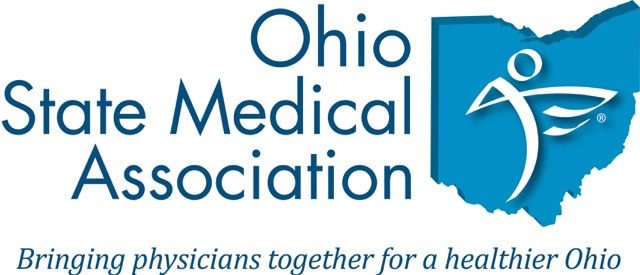Complete Story
05/25/2020
Federal Advocacy Update
There continues to be a lot of activity at the state and federal level in response to COVID-19 and other major healthcare issues, and OSMA was involved in a variety of advocacy initiatives last week. Below is an overview of our information at the Federal level.
As always, if you have questions about our advocacy efforts or want to learn more about how to get involved, contact our government affairs department.
Organized Medicine Pushes For ERISA Plan Coverage of Telehealth
The AMA has sent letters to Senator Tina Smith (D-MN) and Representatives Kim Schrier, MD (D-WA), Phil Roe, MD (R-TN), Joseph Morelle (D-NY), and Jeff Van Drew (R-NJ) voicing our support for companion bills S. 3741 and H.R. 6644, “the Health Care at Home Act.” These bills would require health plans regulated by the Employee Retirement Income Security Act of 1974 (ERISA) to cover telehealth services. Physicians and other health care providers are unsure of whom, and under what conditions, they are permitted to provide medical services via telehealth under ERISA plans. These bills would close this gap and provide clarity for physicians and patients.
Update on CARES Act Relief Payments to Physicians
Last week, the AMA responded to inquiries from OSMA and other state medical societies regarding the second round of relief payments from the CARES Act.
The AMA reached out directly to senior HHS officials about these questions. Certain formulas that were previously on the HHS website led some physicians to believe they may have received more money from this fund than they were supposed to, and they were worried that it will be recouped by HHS. Because the AMA informed the administration of the concerns the previous formulas and language about overpayments were causing many physicians, HHS removed it from the website.
HHS was concerned that many physicians were using the formulas to calculate for themselves what they thought HHS intended for them to receive from the CARES Act Provider Relief Fund, and then deciding on the basis of their own calculations that they were going to be in trouble. HHS has asked for people to provide documentation of certain revenue information so that it can make the calculations specific to each TIN (Taxpayer Identification Number). HHS removed the formula and overpayments language from the portal last week to allay concerns from physicians who had done their own estimates and reached conclusions about potential overpayments instead of relying on HHS to do the calculations. Unfortunately, in some cases these changes with formulas appearing and disappearing from the website heightened, rather than allayed, concerns.
On Friday, May 15th, HHS posted revised FAQs on the Provider Relief Fund General Distribution Portal:
https://www.hhs.gov/sites/default/files/provider-relief-fund-general-distribution-faqs.pdf
Several of the FAQs are dated May 14th and seek to clarify some of the recent confusion, particularly these two questions:
- How did HHS determine the additional payments under the General Distribution? (Added 5/14/2020)
HHS is distributing an additional $20 billion of the General Distribution to providers to augment their initial allocation so that $50 billion is allocated proportional to providers' share of 2018 net patient revenue. The allocation methodology is designed to provide relief to providers, who bill Medicare fee-for-service, with at least 2% of that provider’s net patient revenue regardless of the provider’s payer mix. Payments are determined based on the lesser of 2% of a provider’s 2018 (or most recent complete tax year) net patient revenue or the sum of incurred losses for March and April. If the initial General Distribution payment you received between April 10 and April 17 was determined to be at least 2% of your annual patient revenue, you will not receive additional General Distribution payments.
- How can I estimate 2% of patient revenue to determine my approximate General Distribution payment? (Added 5/14/2020)
In general, providers can estimate payments from the General Distribution of approximately 2% of 2018 (or most recent complete tax year) patient revenue. To estimate your payment, use this equation:
(Individual Provider Revenues/$2.5 Trillion) X $50 Billion = Expected Combined General Distribution.
To estimate your payment, you may need to use “Gross Receipts or Sales” or “Program Service Revenue.” Providers should work with a tax professional for accurate submission.
This includes any payments under the first $30 billion general distribution as well as under the $20 billion general distribution allocations. Providers may not receive a second distribution payment if the provider received a first distribution payment of equal to or more than 2% of patient revenue.
Additional information that has recently been added notes that HHS is making a list publicly available of the providers who have received and accepted money from the Provider Relief Fund:
https://data.cdc.gov/Administrative/HHS-Provider-Relief-Fund/kh8y-3es6
Other questions have arisen regarding what HHS views as the appropriate use of the CARES Act funds. We have not seen additional guidance beyond that provided on the website, and we think it would be difficult for HHS to craft language in a way that would be relevant to each practice’s individual needs. We believe that the key thing is that each practice is able to clearly document the revenue losses and expenses it is incurring that are directly due to COVID-19, which could include losses related to social distancing (such as cancellation of visits and procedures, Part B drugs that have passed their expiration date), costs of new infection control practices, PPE, digital health equipment, etc., and that are not reimbursable from other sources (excluding loans that have to be repaid).

